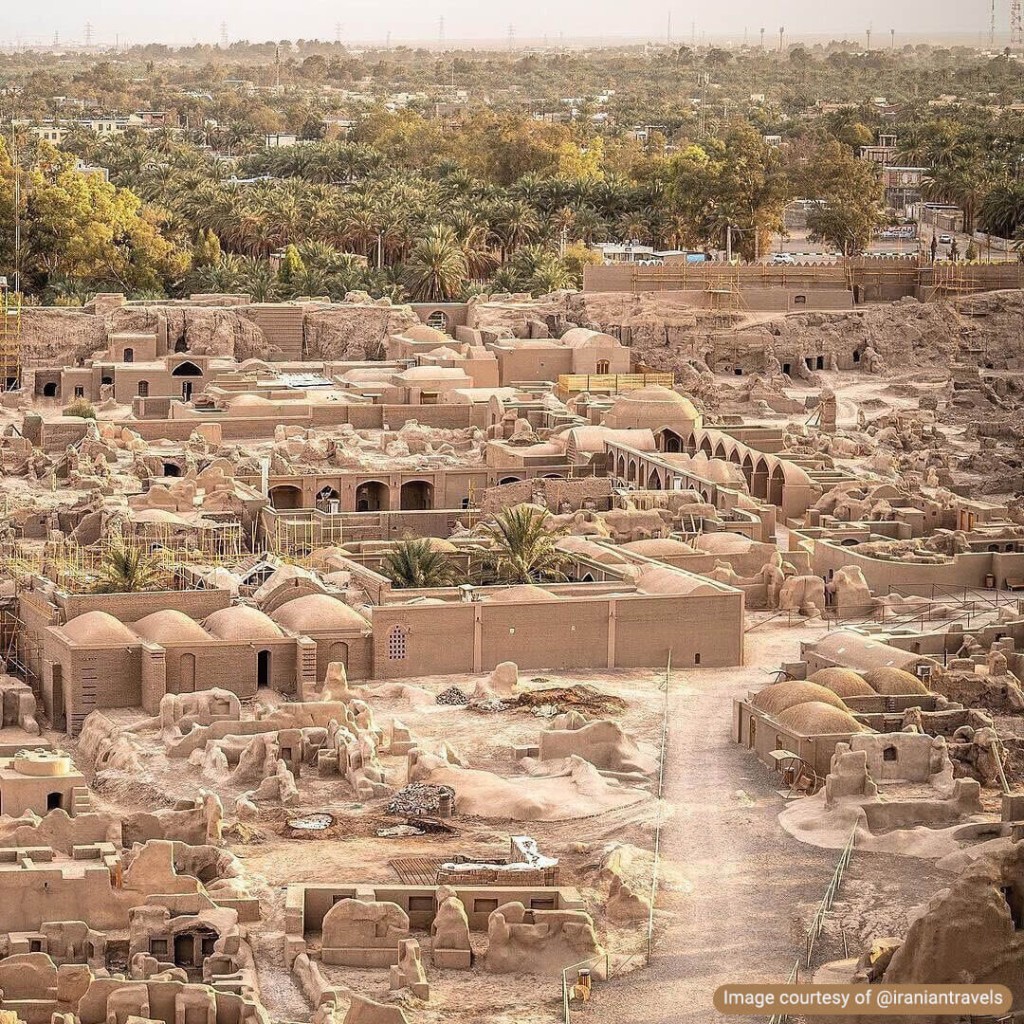
The ancient city of Bam and its cultural landscape is one of several Iranian World Heritage Sites registered by UNESCO that dates back to at least the Achaemenid period, the 6th to 4th centuries BCE. Bam’s prosperity period was in the 7th to 11th centuries when it was located at the intersection of ancient trade roads. This city was populated from the Achaemenid era until 200 years ago. After that, it served as a military base until about 80 years ago.
The ancient city of Bam owes its construction to the creation of the Iranian underground water supply system, the Qanat, that still supplies water to this city. This ancient site, housing Arg-e Bam (Bam Citadel) in its heart, is one of the most popular Bam tourist attractions.
Geographical Location of Bam Ancient City
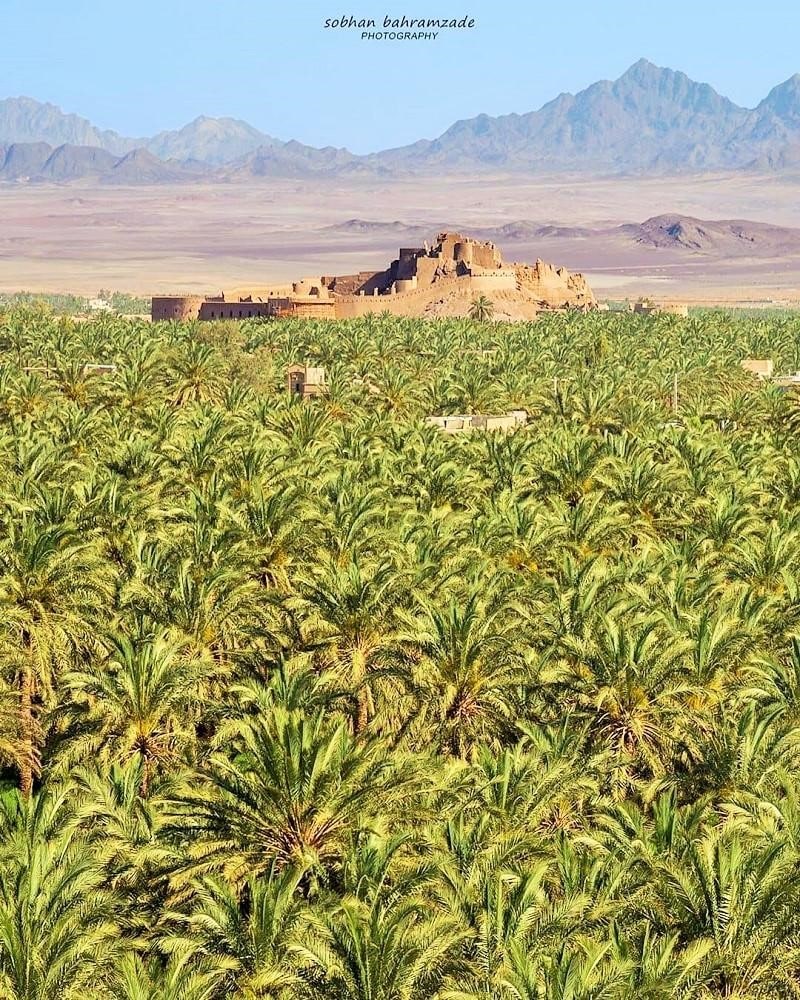
Bam is located between the southern region of the Lut desert in southern Iran and the northern part of the Jerbal Barez mountain range in the southeast of Iran. The importance of this city was primarily due to its geographical location and, on a larger scale, its ties with the trade centers of West Asia in ancient times.
At first, this city was surrounded by enclosure walls, like other communities located in the desert. The entire enclosed area expanded to an area of 200,000 square meters. The governor resided in another enclosed section, in a citadel within the enclosed city. With this protection, the people of the desert cities felt more secure and could grow and prosper. The enclosure walls are 1810 meters long and their height varies from 15 to 18 meters. It seems that there were 38 watchtowers along this wall surrounded by a deep moat, which was filled with water during a siege.
Apart from this walled city and its citadel, the main attraction of Bam and its cultural landscape, several forts and castles were among the ancient attractions of this city that were destroyed. Today, you can visit the Dokhtar Castle (Daughter’s Castle) from the 7th century AD in Bam, which is located in the north of the ancient city. Some shrines dating back to the 11th and 12th centuries AD include the tombs of Imamzadeh Asiri and Imamzadeh Zayd.
Artaxerxes I, the Achaemenid Founder of Bam Ancient City
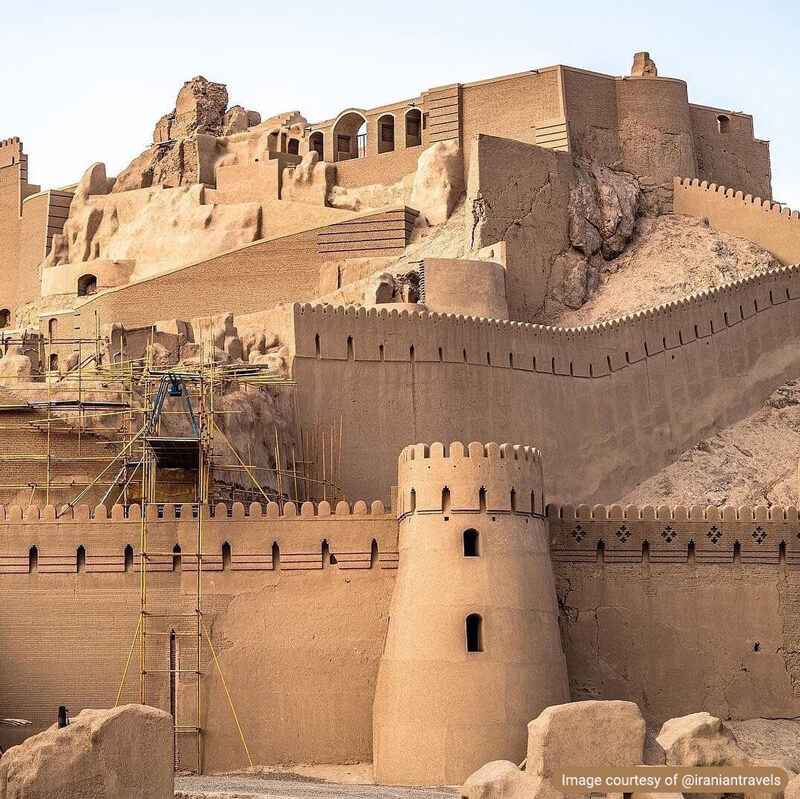
The founding of the ancient city of Bam is attributed to Artaxerxes I, the sixth Achaemenid king. Thus, the construction of this city goes back to 424 to 460 BCE. Ardashir I, the son of Xerxes, was known as “Bahman”, and perhaps the name “Bam” derived from Bahman. The word Bahman means fair-minded and of good essence. Artaxerxes I was nicknamed Bahman because of his honesty and good behavior in his youth.
Artaxerxes I built a strong citadel in the east of Iran and relocated the people of “Kajaran” (modern Bam) there. Inside the citadel was the infrastructure of a fully functional city. This citadel became known as “Arg-e Bahman”. Artaxerxes I had two goals for this decision:
- It would be easier to defend against foreign invasions.
- To make the management of public affairs easier for the local ruler.
After Artaxerxes I, subsequent Iranian kings took a special interest in the historical city of Bam and added more buildings. For this reason, buildings from different dynasties exist in this ancient city, Like the mosques in Bam Citadel that date back to the Islamic governments in Iran.
Shahnameh’s Account of the Foundation of Bam City
In Iranian mythology, there is a story about the construction of the city of Bam, which Ferdowsi has retold in the form of poetry in the legend of “Bahman and Farmarz” in his Shahnameh (Book of Kings). In this legend, Bahman-e Bon (Kay Bahman) battles with Farmarz in the east of Iran and after defeating him, he builds a fortified citadel called “Bahman Citadel”. The fictional character of Kay Bahman is a representation of the Achaemenid king, Artaxerxes I.
The Legend of Haftvād’s Worm
Bahman and Faramerz is not the only legend that mentions the ancient city and the citadel of Bam. The Legend of Haftvād also happened in Kajaran, the old city of Bam. This legend is mentioned in the Shahnameh and the book of Ardeshir Babakan.
Haftvād means having seven sons. Haftvād was a resident of Kajaran who had seven sons and one daughter. At that time, the people of Kajaran earned their living by spinning textiles. One day, Haftvād’s daughter who was a spinner found a worm in an apple and took it as a good omen, and hid it in her spindle. The worm grew larger and stronger day by day, and Haftvād used its power to plunder people. Until Ardeshir went to battle and destroyed the giant worm and restored peace and order to Kajaran.
According to the references in the story, it happened during the Parthian rule. Researchers consider this story to be a reference to the beginning of silk production in the city of Bam.
Textile and Silk trade in Bam Ancient City
Since ancient times, the people of Bam have been engaged in the production of cotton and silk textiles and yarn. The legend of Haftvād’s worm also mentions this trade in Bam. Mulberry trees were cultivated near the city to feed silkworms. Its location on the Silk Road added to the commercial prosperity of this city.
The Architecture of Bam and its Cultural Landscape
What makes Bam Citadel special and unique in terms of its architecture is the indigenous construction technique. Bam architects have traditionally used layers of clay (Chineh), adobe, and vaulted and domed structures. This city is the best example of desert architecture. You can find a uniform style and technique in all the structures all over the city.
The enclosed and ancient Bam citadel consists of two different sections for the governor (castle) and common people. The governor’s section is built on top of a rock that is higher than the rest of the city and includes the royal stable, barracks, and the governor’s residence.
The section for common people, from the governor’s residence to the city walls, is built over a relatively flat area and contains all necessary urban infrastructure. 528 houses, the main Bazaar, the square, Jame Mosque, Mirza Naeem School, Zoorkhaneh, Malik al-Tojjar house, caravanserai, public bathhouse, and Jewish Sabbath. A nobleman’s house was also inside the citadel. A cemetery, Yakhcal (ancient ice house), and agricultural farms were located outside the citadel. In the following, we will introduce the important buildings in Bam and its cultural landscape.
Bazaar
The bazaar (market) is located near the entrance of the citadel. This market is 115 meters long and has 42 chambers. In this market, silk and cotton were sold to traders who traveled here on the branches of the Silk Road. The bazaar has a Chaharsooq (a crossroads with four sides), with a bakery on the east side. The west side leads to the alley of textile spinners, natural dye workshops, and a small mosque. The citadel market stretches to the main square.
Square (Takyeh)
On the right side of the bazaar, there is a large square called Takyeh. This square was used as Hosseiniyeh or Takyeh since the Safavid period, which was the peak of the prosperity of Shia religion in Iran. There is a clay Manbar (pulpit) in this square. In the eastern part of the Hosseinieh is an alley that leads to the school and the mosque.
Central Mosque
This mosque is built on the remains of the Zoroastrian fire temple, which was built with four-Iwan style that was later altered to have three Iwans. Professor Arthur Pope believed that this mosque was built during the Saffarid period.
Zoorkhaneh
The tradition of building such gymnasiums dates back to ancient Iran when the Pahlevani and Zoorkhaneh rituals flourished. Zoorkhaneh has a pit, a dome, and four Iwans. Most Zoorkhaneh buildings have a corridor at the entrance. The absence of this corridor shows that the building was converted into a Zoorkhaneh sometime after its construction. The Zoorkhaneh of Arg-e Bam dates back to the Safavid period.
Mirza Naeem School
This school is located near the front of the north entrance of Jame Mosque of Bam. This beautiful building consists of two sections, interior (the teacher’s quarter) and the exterior part (the classroom). Mirza Naeem’s tomb is located in a corner of the schoolyard.
Malek al-Tojjar Mansion
The mansion is located near Zoorkhaneh. The interior of the building includes summer and winter sections. The eastern wing includes a well and a fountain as well as a private bathhouse.
Bam Caravanserai
Malek al-Tojjar mansion is connected to the caravanserai by a corridor. The caravanserai has a large square with a platform in the middle for stocking and selling goods. There are also buildings around the square for travelers to rest.
The Jewish Sabbath
At the end of the main passage towards the governor’s residence, there is a covered passage which is known as the Jewish Sabbath. There is a two-story building on the west side of Chaharsouq of this Sabat, and wind catchers and balconies on the south side. In the old days, Bam was the center of silk weaving, and cotton plants and mulberry trees were cultivated there. The jewish population in this area have been engaged in textile manufacture, especially silk.
Khanqah (Monastery)
In the west of the enclosure, there is a royal stable, which dates back to the Timurid period. The Khanqah building features several rooms and chambers for theology students to rest and study.
Houses in Bam Citadel
Almost all the houses in the ancient city of Bam were inter-connected. The houses were still standing until 1930, and people lived there. Bam houses are divided into three categories:
- Small houses belonging to the workers that had two or three rooms
- Middle-class houses that had three or four rooms
- Elegant houses that belonged to the elite and had many rooms, large courtyards, and barns. The Sistani House and Yahoodi House (Jewish House) are examples of these houses.
All these houses, like other buildings, were made of adobe.
The Governor’s Section in Bam
The governor’s section includes the residence of the governor and official buildings. This section is located on highland and includes the following sections:
Governor’s Gate
The fortified governor’s gate separates the civilian section from the governor’s section. This gate is located in the north of the residential area and faces the Jewish Sabbath. Entering from the upper floor reserved for guards, you will see two rooms attached to this gate. The gate has a tower, a rampart, and an arrow slit. Arrow Slits are slanted openings under the top of the tower. Their slanted angle means when throwing arrows at the enemy, the archers were safe from enemy arrows.
Barracks
This part was the accommodation of soldiers and guards. The barracks were active until 1930 and had parts such as a windmill and the mansion of Mir Nizam (army commander).
Governor’s Residence
The main part of the governor’s section in Bam is the governor’s residence. This house includes parts such as the summer section, winter section and open yard. The house has plasterwork from the Seljuk period, and includes a building called Kushk-e Chahar-Fasl (Four-season Palace). As the name of this palace shows, it was used in all seasons.
The palace is a four-story building. The palace was Dar al-Hukumah (governor’s office) and the four main elements of the government at that time were located there: Adliyeh (Court), Maliyeh (Tax office), Baladieh (municipality) and Nazmieh (police). There is an observation tower with a square base on top of the palace. Although it was circular in the past, it became square during the Qajar era and after being damaged. There is a private bathhouse behind the governor’s section.
Prison
The prison is a dungeon that is located deep in the ground and under one of the government towers. Due to the darkness and lack of ventilation, many prisoners have died there. The building of this prison probably belongs to the Saffarid period.
Bam Citadel Water Supply System
Apart from the Qanat (aqueduct) system that transferred water from the Jebal Bazer mountains near the enclosed Bam city through a U-shaped pipe, many houses had dedicated wells.
There was a deeper well above the barracks and the deepest well was located behind the governor’s private bathhouse. There were also some water canals on the ground to irrigate the trees.
Ancient City of Bam’s Current Condition
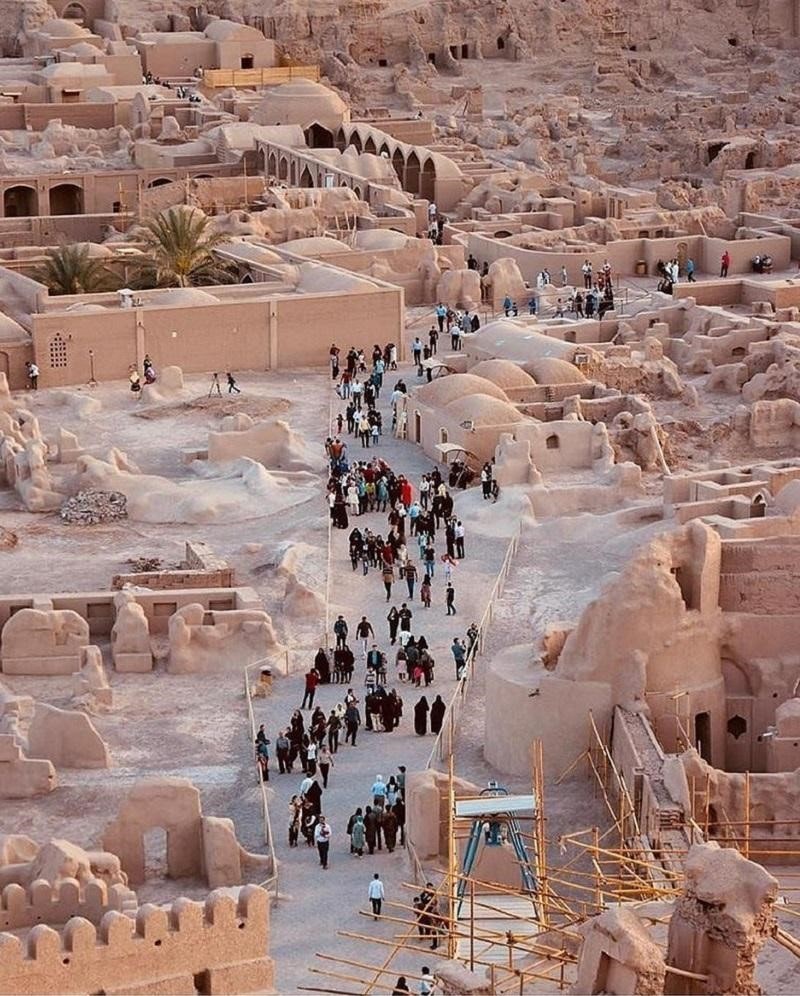
Over time, the city’s population increased and the region grew more secure. For this reason, new houses were built outside the enclosure walls and people started to live there. Commercial centers and religious gatherings were also moved outside the city walls. There are several palm groves there and many trees along the street form a garden city outside.
Until 1930, the houses of the ancient city of Bam were inhabited. But in this year, the barracks was moved to the new city, which caused people to gradually move from the ancient city of Bam. This part has been abandoned since 1969.
Gradual Decline of Bam City
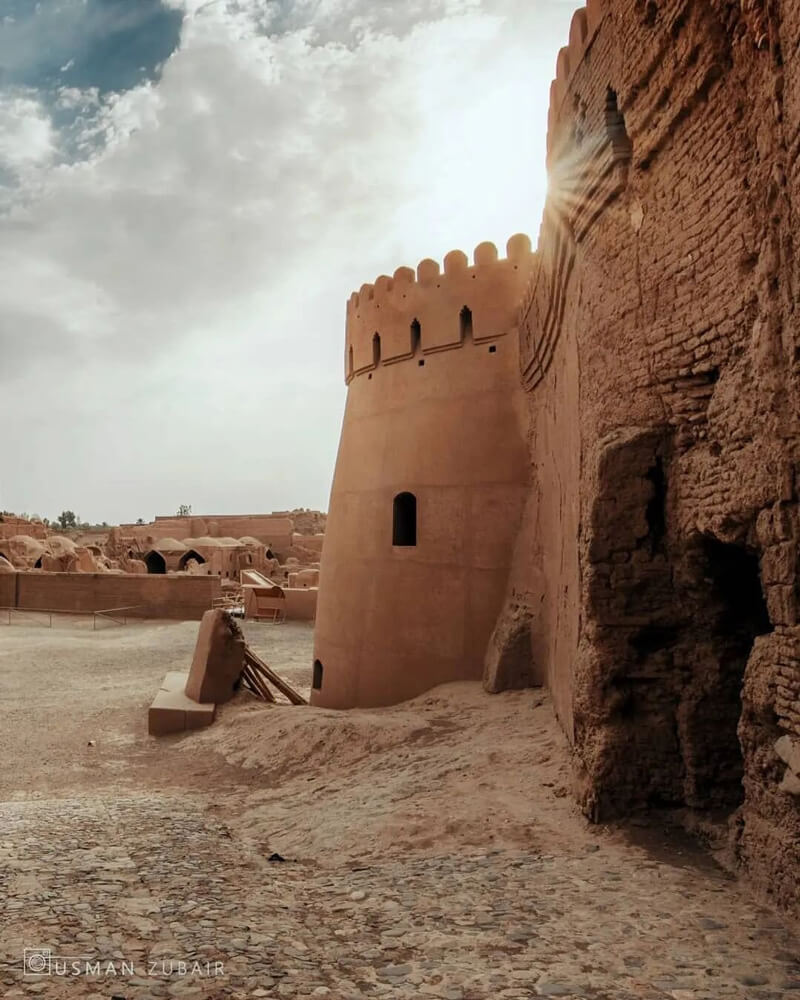
As the ancient city of Bam became devoid of life, several factors accelerated the city’s destruction:
- Using the softened soil of the roofs for cultivating date fruit and citrus trees
- Demolition of ancient buildings in the hope of finding antiques and treasures
- Removing baked bricks for the construction of other places.
Later, in three stages and in the years 1958, 1973 and 1993, parts of the ancient city were reconstructed. But unfortunately, the 2003 Bam earthquake caused serious damage and led to widespread destruction in this city. Of course, after the earthquake, the foundations of some walls remained intact. This caused the reconstruction of the city to proceed properly.
More renovations are underway these days, and Bam and its cultural landscape still demand further exploration. Even before the earthquake, this city was not intact when travelers visited the city. If you travel to the ancient city of Bam, you will see more or less the same things that existed there before the natural disaster of 2003.
Where is the Ancient City of Bam?
This place is located at a distance of 195 kilometers from the southeast of Kerman city. To visit Bam and its cultural landscape and Citadel, use the following location:
Frequently Asked Questions About Bam and its Cultural Landscape
The following questions may be part of your questions about the ancient city of Bam and its historical citadel; Otherwise, share your questions with us in the comments section and we will respond as soon as possible.
What is the reason for the global recognition of Arg-e Bam (Bam Citadel)?
Bam Citadel is known as the largest adobe building in the world and is compared to the Great Wall of China in terms of its size and magnificence.
How old is the Bam citadel?
The construction of the Bam citadel has been attributed to the Achaemenid period, between 4th to 6th century BCE. This enclosed city and its citadel were inhabited until around 1850, but people gradually left the citadel and created the new city of Bam.
What effect did the 2003 earthquake have on the ancient city of Bam?
In this earthquake, which had a magnitude of 6.6 on the Richter scale, almost 80% of the Bam citadel was destroyed. After this site was placed in the UNESCO List of World Heritage in Danger, different countries helped in the reconstruction efforts.




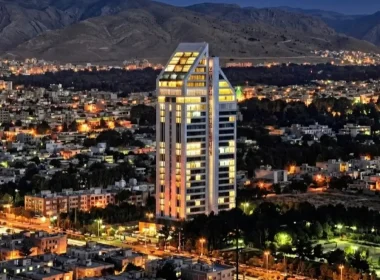

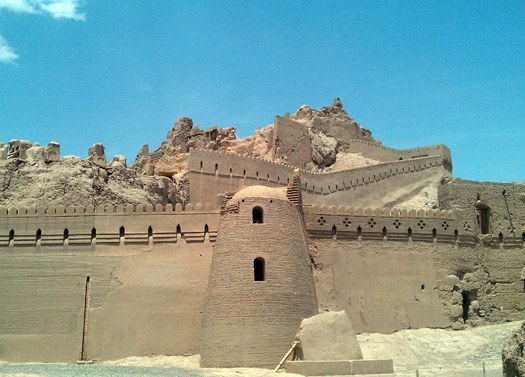
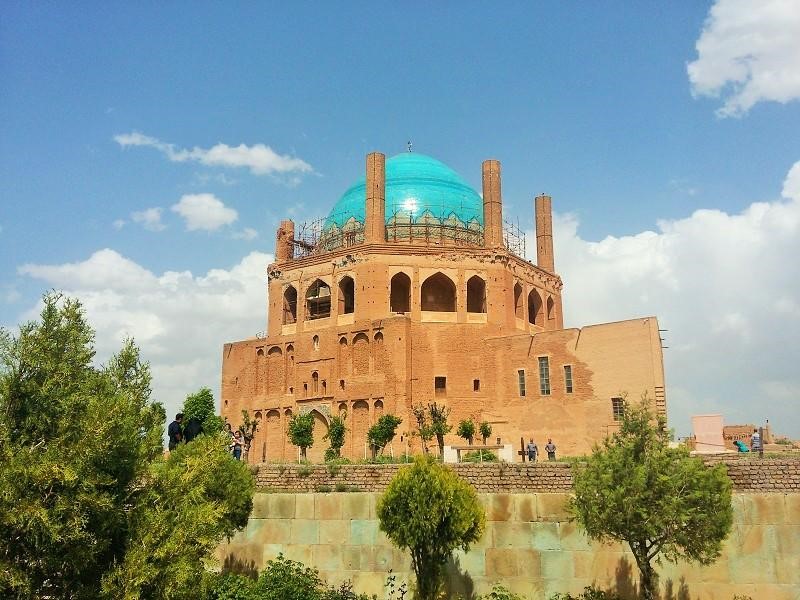
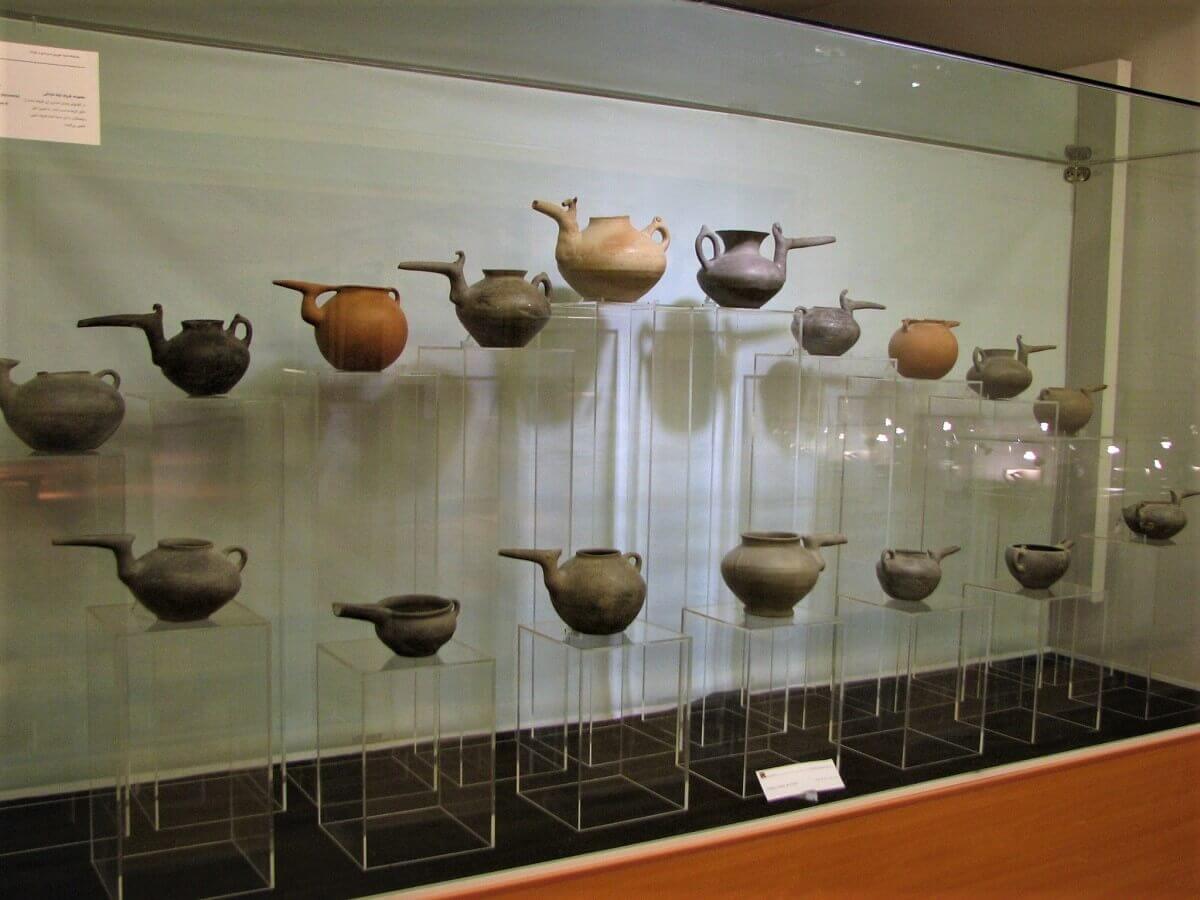






This looks like an interesting place to visit, I love the top photo!
You should be there at sunset Becky. Before I had a digital camera, I used to take several shots of the sunset every other minutes. The colors change on the clay and I’m sure you would love to see that.